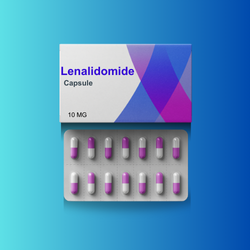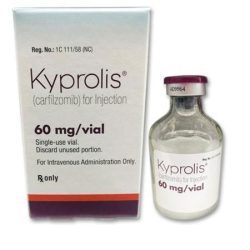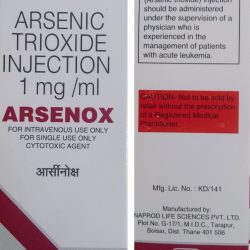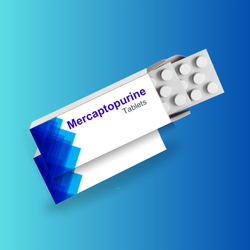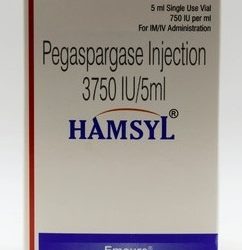Description
Uses of Medicine:
Lenalidomide 2.5 mg, 5 mg, 10 mg, 15 mg, 20 mg, and 25 mg is a thalidomide analogue. Patients, Healthcare Professionals (HCP), or Hospitals can buy Lenalidomide 2.5 mg, 5 mg, 10 mg, 15 mg, 20 mg, and 25 mg Capsules online from India through THE INDIAN PHARMA (a trusted Lenalidomide Supplier, Exporter, and Contract Manufacturer in India) for the management and treatment of adult patients with:- Multiple myeloma (MM), along with dexamethasone.
- MM, as maintenance following autologous hematopoietic stem cell transplantation (auto-HSCT).
- Transfusion-dependent anemia because of low- or intermediate-1-risk myelodysplastic syndromes (MDS) associated with a deletion 5q abnormality with or without additional cytogenetic abnormalities.
- Mantle cell lymphoma (MCL) whose disease has relapsed or progressed after two prior therapies, one of which included bortezomib.
- Previously treated follicular lymphoma (FL), along with a rituximab product.
- Previously treated marginal zone lymphoma (MZL), along with a rituximab product.
Limitations of Use: This therapeutic drug is not indicated or recommended for treating and managing patients with CLL outside of controlled clinical trials.
Lenalidomide 2.5 mg, 5 mg, 10 mg, 15 mg, 20 mg, and 25 mg is a type of medicine that is prescribed for treating some forms of blood cancer in patients above the age of eighteen. These include multiple myeloma, mantle cell lymphoma, myelodysplastic syndrome (MDS), and follicular lymphoma. Myeloma is a type of cancer that affects the plasma cells in the bone marrow. The cancerous cells cause uncontrollable multiplication and result in severe damage to bones and a weak immune system. While this condition cannot be cured, treatment with Lenalidomide can help improve the management of the symptoms and provide the patient with a better quality of life. In MDS, the blood and marrow contain blood cells that are abnormal and do not work effectively. Mantle cell lymphoma is a rare form of non-Hodgkin lymphoma that involves lymph nodes, while follicular lymphoma pertains to a cancer infection of B cells, an infection of a type of white blood cell (WBC) that grows slowly.
Patients taking Lenalidomide 2.5 mg, 5 mg, 10 mg, 15 mg, 20 mg, and 25 mg Capsules may experience various side effects. Some include fever, headache, nausea, diarrhea, constipation, breathlessness, cough, tiredness, muscle cramps, back pain, and skin rashes. Thyroid-related issues or other skin conditions may develop in some patients. While not all will experience adverse reactions, it is necessary to monitor how you feel throughout treatment and speak with your healthcare provider (HCP) if any signs and symptoms persist or become bothersome.
Before starting treatment with this medicine, you should inform your physician if you have any known allergies to this medication or any of its components. Also notify the physician if you have any significant history of blood clots, heart attacks, smoking, high cholesterol, or high blood pressure. In addition, please inform the physician if you currently have or have had some viral infections like hepatitis B, HIV, or the chickenpox virus.
As this therapeutic drug may lower your blood cell counts, your doctor will carry out regular blood tests to check your condition before and during treatment. Lenalidomide 2.5 mg, 5 mg, 10 mg, 15 mg, 20 mg, and 25 mg Capsule is not advised for patients who are younger than 18 years old. Always adhere to the instructions provided by the doctors and do not modify the prescribed dosage to ensure that the medicine is effective and safe.
Dosage & Side Effects: Recommended Dosage for Multiple Myeloma (as Combination Therapy): The recommended starting dose of Lenalidomide is 25 mg orally once daily on Days 1-21 of repeated 28-day cycles along with dexamethasone. For patients greater than 75 years old, the starting dose of dexamethasone may be reduced. Continue treatment until there is evidence of disease progression or unacceptable toxicity.
Recommended Dosage for Multiple Myeloma (as Maintenance Therapy Following Auto-HSCT): The recommended starting dose of Lenalidomide is 10 mg once daily continuously (Days 1 to 28 of repeated 28-day cycles) until there is evidence of disease progression or unacceptable toxicity. After 3 maintenance cycles, increase the dose to 15 mg once daily (if tolerated). Following auto-HSCT, start maintenance therapy after adequate hematologic recovery (ANC at least 1,000/mcL and/or platelet counts at least 75,000/mcL).
Recommended Dosage for Myelodysplastic Syndromes (MDS): The recommended starting dose of Lenalidomide is 10 mg daily. Continue treatment until there is evidence of disease progression or unacceptable toxicity.
Recommended Dosage for Mantle Cell Lymphoma (MCL): The recommended starting dose of Lenalidomide is 25 mg/day orally on Days 1 to 21 of repeated 28-day cycles for relapsed or refractory mantle cell lymphoma (MCL). Continue treatment until there is evidence of disease progression or unacceptable toxicity.
Recommended Dosage for Follicular Lymphoma or Marginal Zone Lymphoma (MZL): The recommended starting dose of Lenalidomide is 20 mg orally once daily on Days 1 to 21 of repeated 28-day cycles for up to 12 cycles of treatment along with rituximab.
The most common side effects of Lenalidomide 2.5 mg, 5 mg, 10 mg, 15 mg, 20 mg, and 25 mg oral capsules are:- MM: diarrhea, fatigue, cough, rash, anemia, constipation, neutropenia, abdominal pain, leukopenia, thrombocytopenia, peripheral edema, insomnia, upper respiratory tract infection, muscle cramp/ spasms, asthenia, dyspnea, back pain, nausea, pyrexia, bronchitis, dizziness, nasopharyngitis, gastroenteritis, decreased appetite, and tremor.
- MDS: rash, thrombocytopenia, neutropenia, cough, diarrhea, pharyngitis, pruritus, pyrexia, fatigue, constipation, back pain, nausea, nasopharyngitis, arthralgia, peripheral edema, dizziness, headache, muscle cramp, dyspnea, and epistaxis.
- Non-Hodgkin’s Lymphoma (NHL: MCL, FL, or MZL): cough, neutropenia, rash, constipation, thrombocytopenia, fatigue, anemia, leukopenia, diarrhea, nausea, pyrexia, and upper respiratory tract infection.

